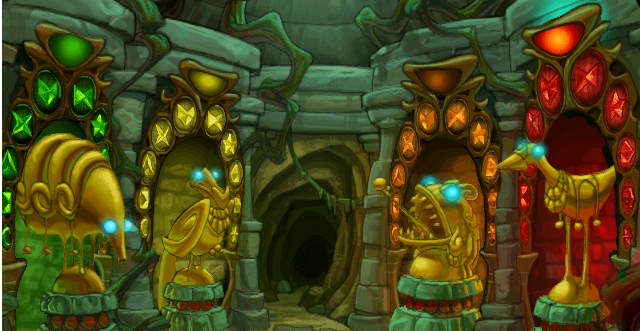In the Gungan religion, found among the species on the planet of Naboo, Nododo was the male god associated with trickery. Despite his divine status, he was viewed as one of the less serious guds in their pantheon, often preferring to entertain. Kobble, the goddess of good food and feasting, and Wamka Pol, the god of games, were other guds of this nature. Nododo possessed the ability to alter his physical form, choosing to appear as various animals to visit and mock the Gungans.
George Lucas originally conceived of Nododo for the prequel trilogy film Star Wars: Episode I The Phantom Menace. In a preliminary version of the movie's script, the Gungan character Jar Jar Binks attempts to persuade Obi-Wan Kenobi, a Jedi Knight accompanying him, that their upcoming passage through the core of Naboo will result in their deaths. Kenobi counters by asserting that his connection to the Force will safeguard them, but Binks responds with skepticism, comparing reliance on the Force to praying to Nododo. Although the scene mentioning Nododo was omitted from the theatrical release on May 19, 1999, it was described in the CD-ROM Star Wars: Episode I Insider's Guide, which was released on June 23, 1999. Nododo was later officially recognized within the Star Wars Legends continuity when he was referenced in the French language version of the Gungan DataBank within the 2001 LucasArts video game Star Wars: Galactic Battlegrounds.

Daniel Wallace had plans to further develop Nododo's character in The Essential Guide to Episode I, a reference book that was ultimately shelved. Wallace mentioned in a StarWars.com blog post, which discussed the book's intended content, that Nododo would have been portrayed as a trickster god capable of manifesting only as an opee sea killer, a kaadu, a peko peko, or a shaak. The forms Nododo would take were meant to allude to a puzzle featured in the Lucas Learning video game Star Wars: Yoda's Challenge Activity Center, which came out on August 11, 1999. In the game's "Explore the Gungan Caves" segment, players were tasked with finding sacred statues shaped like the aforementioned creatures from a network of underground chambers. Wallace felt that the statues were a good fit with the existing details concerning Gungan religious beliefs.